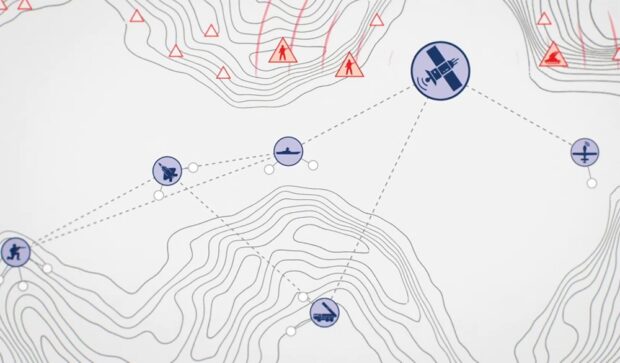In recent demonstrations, Lockheed Martin and Verizon flew 5G-enabled drones to capture and securely transfer high-speed, real-time intelligence, surveillance and reconnaissance (ISR) data from aircraft in flight to geolocate military targets.
The companies demonstrated two key advances in technology that can provide critical applications for the Department of Defense (DOD):
- First, real-time ISR radio frequency (RF) and streaming video data was transmitted over 5G millimeter wave links to allow advanced signal processing algorithms to be executed at the tactical edge. The data was displayed in a livestream video feed. This capability will provide enhanced levels of situational awareness and command & control (C2) for commanders and service members in the field.
- Second, the technology passively detected and geolocated RF signals that could be used for communications, sensing, or jamming. This will enable the DOD to detect and target adversarial assets in a military environment.
What People Are Saying
Dan Rice, vice president of 5G.MIL Programs at Lockheed Martin:
“To stay ahead of our adversaries, military decision-makers need the timely and accurate information that 5G.MIL delivered in this demonstration. By blending advanced commercial 5G capabilities with military capabilities using secure, open standards, we are helping to make the DOD’s vision for integrated deterrence a reality.”
Srini Kalapala, senior vice president for Technology and Product Development at Verizon:
“Verizon is the network America relies on, and our Private 5G Ultra Wideband networks provide the security, reliability, capacity and low latency that the defense sector depends on.By demonstrating the mission critical connectivity that our network provides, we are demonstrating how 5G and edge computing can help the DOD address their strategic priorities and continue to develop advanced solutions.”
The Details
- The Basic Set-Up: Four 5G-enabled rotary wing drones flew coordinated ISR missions while linked to two Verizon On Site Private Network nodes – the technology that enabled the secure transfer of ISR data. The test occurred at Lockheed Martin’s 5G test range in Waterton, Colorado.
- Command and Control: The companies seamlessly and securely moved the data captured by the drones between a 5G private network and a surrogate public network. The ability to use both private and public 5G networks is key – it will extend the reach of 5G.MIL technology to a range of military environments where commercial networks may not be available or appropriate.
- Signal Detection Capabilities: The drones successfully located a target in the field that was transmitting a low power RF signal. The signal was detected because real-time drone sensing data was transmitted over a private Verizon high-speed, low-latency 5G Ultra Wideband network and then processed by advanced signal processing algorithms running on edge compute resources, enabling geolocation of the signal source.
How:
- The low latency, high throughput and solid reliability provided by the Verizon network enabled the companies to transmit and process the ISR data in near real-time.
- Lockheed Martin’s multi-site, multi-vendor 5G.MIL pilot network enabled the data to be securely transferred to other locations to view the ISR data and common operating picture.
Why:
These demonstrations, held in May and September 2022, are part of an ongoing 5G collaboration announced by the companies last year focused on faster delivery of cutting-edge technologies to the DOD.
- The deployment of private 5G is a strategic priority for Verizon. The company’s continued investment in the sector is enabling these types of demonstrations.
- Commercial company collaborations like this are part of Lockheed Martin’s 21st Century Security vision to accelerate the delivery of cutting-edge technologies to U.S. military customers.
What’s Next?
Future demonstrations between Verizon and Lockheed Martin are expected to expand ISR test scenarios to include precision geolocation of moving RF emitters. The companies plan to extend public-private network collaboration securely using 5G.MIL hybrid networks with military data links.
Source: Press Release

